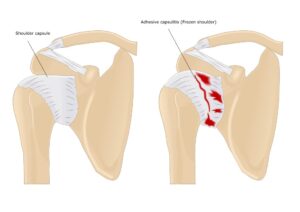🎥 Chapters
00:00 Frozen Shoulder Symptoms and Challenges
0:05 Extracorporeal Shockwave Therapy (ESWT): Targeting Scar Tissue for Adhesive Capsulitis
0:50 Frozen Shoulder Phases: Freezing, Frozen, Thawing
1:30 How Shockwave Therapy Works: Regeneration and Blood Flow for Frozen Shoulder
2:21 Studies on Extracorporeal Shockwave Therapy (ESWT) for Frozen Shoulder
3:21 Regaining Shoulder Movement and Range of Motion using Shockwave Therapy
3:52 Benefits of Shockwave Therapy for Adhesive Capsulitis
5:32 ESWT versus Corticosteroids: Faster Recovery and Improved Outcomes for Frozen Shoulder
Frozen Shoulder/Adhesive Capsulitis and Shockwave Therapy
With Chiropractor in Los Gatos, San Jose, SF Bay Area, CA
Frozen shoulder used to be a 2-3 year healing time before extracorporeal shockwave therapy (ESWT). Now, with low energy focused shockwave therapy, frozen shoulder is less painful and heals quicker.
Frozen shoulder, also known as adhesive capsulitis, is characterized by stiffness, pain, and limited range of motion in the shoulder joint. It typically progresses through three stages: freezing, frozen, and thawing. During the freezing stage, pain gradually increases and the shoulder becomes increasingly stiff. In the frozen stage, pain may decrease but stiffness remains, often significantly limiting movement. Finally, in the thawing stage, range of motion begins to improve, though this can take several months to years. Whatever stage of frozen shoulder you are in, shockwave therapy can help.
With focused ESWT, acoustic waves are sent to the shoulder joint capsule where the adhesions are interfering with shoulder movement. The waves cause a ripple-effect in the tissue and the brittle adhesions are broken up. Research shows that it then stimulates blood flow and bringing in growth factors to the area. In turn, collagen production is increased and there is a regeneration of the tissue. Ultimately, flexibility and function in the shoulder joint are greatly improved.
Pathologies that accompany frozen shoulder are helped with ESWT

- Rotator Cuff Tears: Patients with frozen shoulder may also have tears in the rotator cuff tendons or labral tears which are common in throwing athletes, construction workers and people over 40 years old. Many of the aspects of mild to moderate rotator cuff tears can be helped with shockwave therapy.
- Biceps Tendinitis: Inflammation of the biceps tendon can occur concurrently with frozen shoulder. Biceps tendinitis can lead to adhesions or calcific tendonitis in the biceps tendon and due to its insertion on the superior labrum of the shoulder joint. Using shockwave therapy on the biceps tendon can take unneeded mechanical stress away from the shoulder and decrease inflammation in the shoulder joint.
- Shoulder Impingement Syndrome: This condition involves the compression of the rotator cuff tendons and bursa between the upper arm bone and the tip of the shoulder blade, leading to pain and inflammation. The impingement is often a calcific tendonitis of the supraspinatus tendon. By having you put your arm behind your back during the shockwave therapy, we can draw the supraspinatus tendon out further from under the roof of your shoulder and get better results.
- Osteoarthritis: Frozen shoulder can be associated with osteoarthritis of the shoulder joint, particularly in older individuals. By addressing bone spurs, cartilage degeneration and subchondral sclerosis, ESWT plays a vital roll
in shoulder arthritis.
It’s important to note that while these conditions can coexist with frozen shoulder, not all individuals with frozen shoulder will have these other pathologies, and the presence of these conditions does not necessarily cause frozen shoulder. Each case is unique, and a thorough evaluation by a healthcare professional is necessary for proper diagnosis and treatment.
ESWT can offer you a promising avenue for relieving the symptoms and pathology of frozen shoulder and restoring function to the affected joint. By targeting the underlying issues of stiffness and pain, shockwave therapy can help you regain mobility and get you back to tennis, baseball, swimming, tucking your shirt in or just putting the dishes away with full shoulder range of motion and pain free. Here are some examples of exercises that we use depending on which phase you are in.
Is Shockwave Therapy Safe and Effective?
Moreover, low energy focused shockwave offers a non-invasive alternative to traditional treatments for adhesive capsulitis, such as corticosteroid injections or surgical intervention. There are many studies that compare ESWT and other modalities and, whether it be cortisone injections, PRP, surgery, PT or others, ESWT comes out on top when it comes to efficacy and safety. Unlike invasive procedures that carry inherent risks and lengthy recovery times, ESWT is performed on an outpatient basis and boasts zero to minimal side effects. You will be able to resume your daily activities without skipping a beat. This makes ESWT a preferred choice for those seeking effective, yet gentle, solutions for calcific tendinitis, without compromising on safety or convenience.
Remember to chose low energy focused shockwave over an imposter called, “radial shockwave”. We have seen first-hand people come in our office after being bruised and battered by radial shockwave but never have this happen with the Piezowave low energy focused shockwave machine.
ESWT has the power to restore hope, vitality, and joy to those affected by adhesive capsulitis. It’s not just about treating a condition; it’s about reclaiming a life filled with endless possibilities and moments of pure, unbridled happiness.
What Is Frozen Shoulder or Adhesive Capsulitis?

As calcific tendonitis is a calcification of the tendons of the shoulder, frozen shoulder is a calcification of the joint capsule of the shoulder. The symptoms of frozen shoulder are pain and decreased range of motion. The condition is common after an injury and prolonged immobilization. It can be challenging when sleeping on the shoulder or during o
verhead activities like painting, washing your hair, throwing a ball, etc..
Three Phases to a Frozen Shoulder
- First, there is a thickening of the joint capsule, with fluid loss and decreased range of motion. Initially, many people are unaware that this phase is underway. It lasts 2-8 months.
- Next is called the frozen phase. Here tendons of the shoulder thicken and the joint space is decreased. Lasts 4-12 months.
- Finally, the resolution phase is where range of motion somewhat comes back. Another 12-42 months.
Can Extracorporeal Shockwave Therapy Decrease Healing Times For Frozen Shoulder?
An article in the Journal of Preventative Medicine said it best when they stated, “Through generating low-energy waves and electromagnetic excitation could be effective in this condition due to increasing the regional blood flow, neovascular changes, enzymes release, reduction of inflammatory cytokines, and increasing the flexibility of the collagen fibers and tendons in that area.” They concluded with saying, “The use of ESWT seems to have positive effects on treatment, quicker return to daily activities, and quality-of-life improvement on frozen shoulder [17].”
To point back to the 3 phases of frozen shoulder, the shockwave treatment gets you out of the frozen phase and through the resolution phase.
When it comes to frozen shoulder and extracorporeal shockwave therapy, we’ll let the scientists speak for the results. Now add to this the rehab you will receive in our office. Adding to these key healing ingredients, will also receive specific spinal techniques to add better neurological brain-shoulder connection for improved mechanics, home care recommendations for mobilization and, eventually, strengthening exercises.
You can reach Dr Adam Fields for in-person (Los Gatos and San Jose, California) or telehealth appointments here.
About Chiropractor Dr Adam Fields
Dr Adam Fields is a practicing chiropractor in the Bay Area in Northern California and helps people daily in his office with many challenges that can be helped by shockwave therapy from tendinopathies, arthritis, cartilage regeneration, post surgical scar tissue, pelvic pain, altered biomechanics and more. He uses Endonasal Cranial Adjusting, the Muncie Technique, Extracorporeal Shockwave Therapy (ESWT), Class IV Laser Therapy, posture correction, lifestyle modification, muscle work, and other techniques to help his patients.
Sample Exercises for Frozen Shoulder and Adhesive Capsulitis Rehab
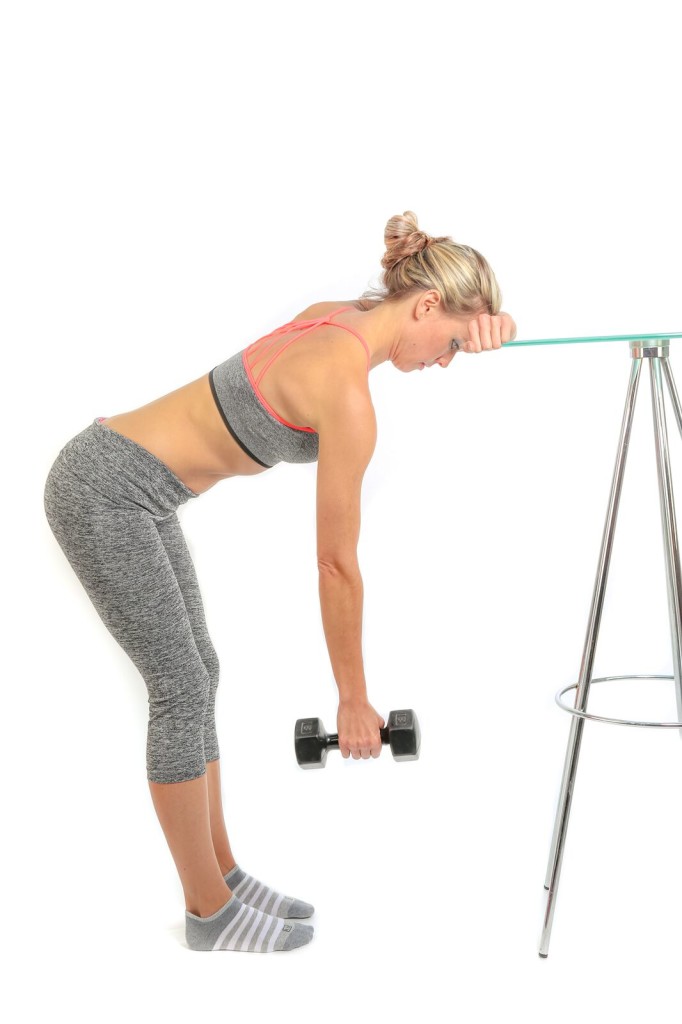
Pendulum exercise for frozen shoulder
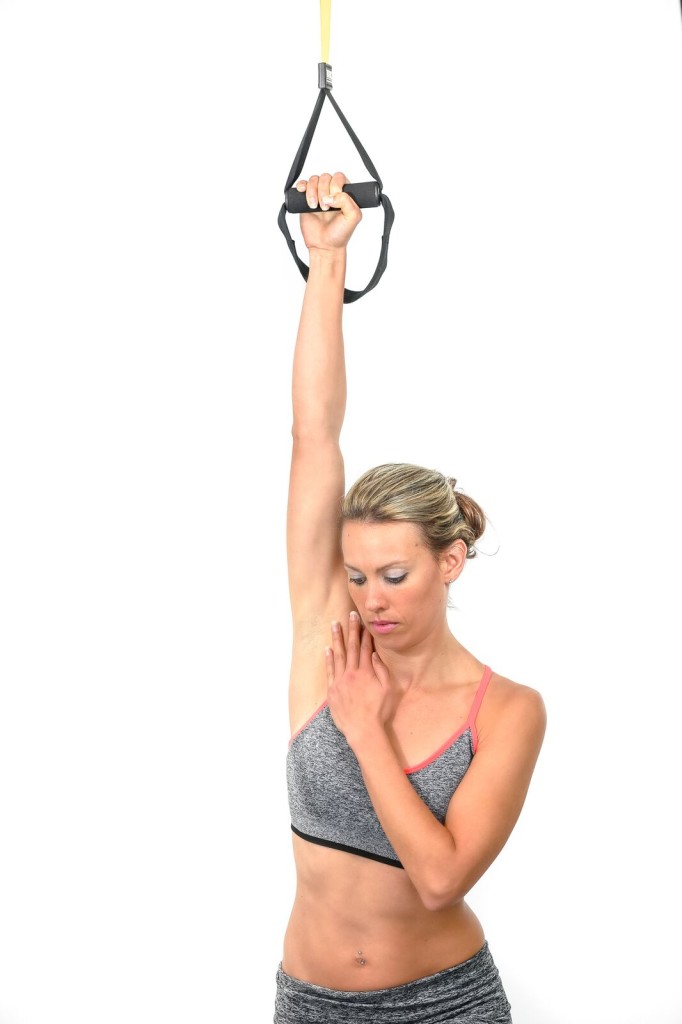
Hanging exercise for frozen shoulder

Supraspinatus strengthening in the later phase of your rehab.

Strengthening your external rotators will be crucial down the line.
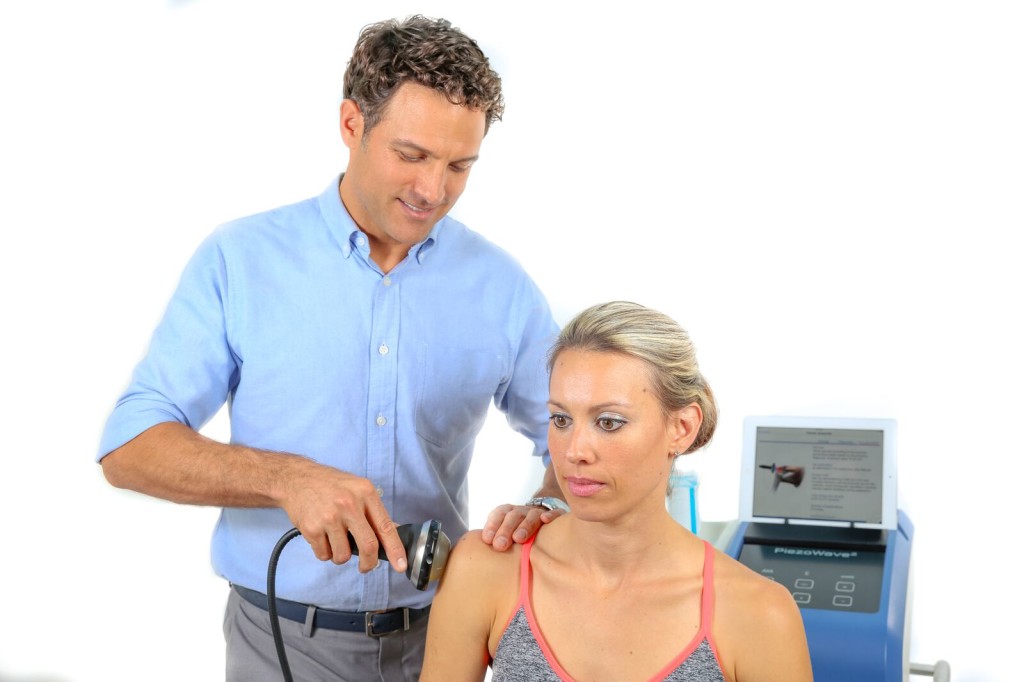
 in shoulder arthritis.
in shoulder arthritis.